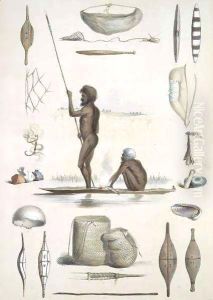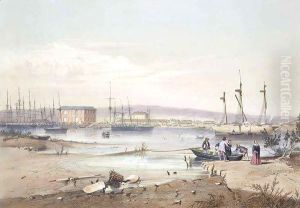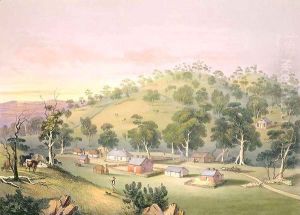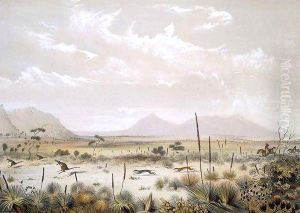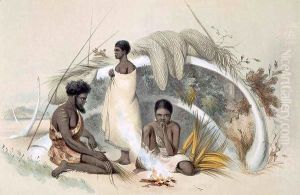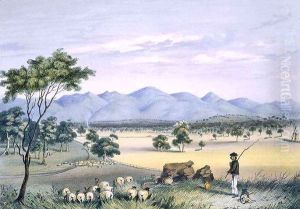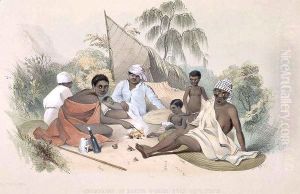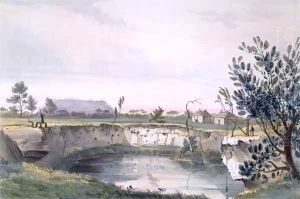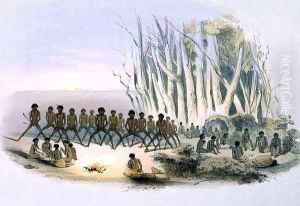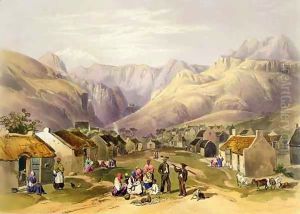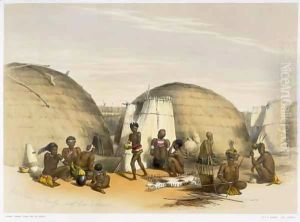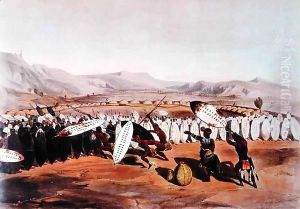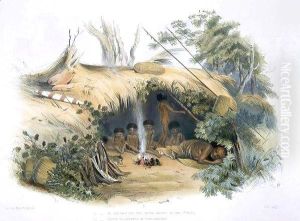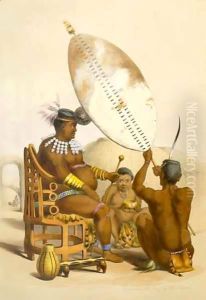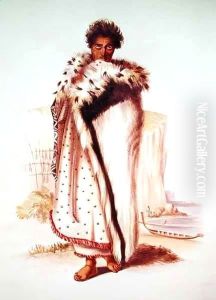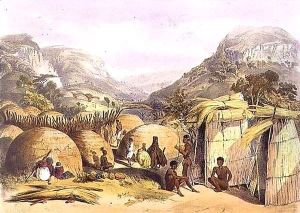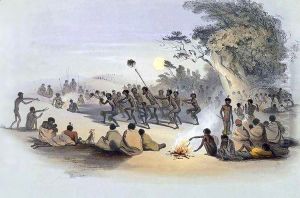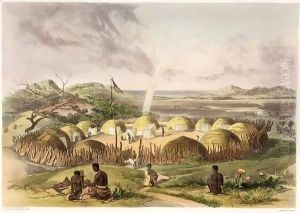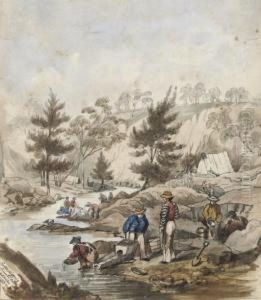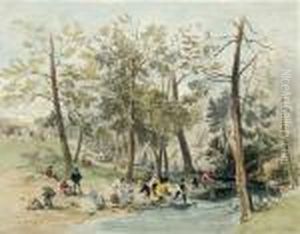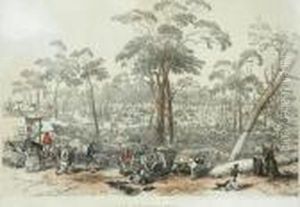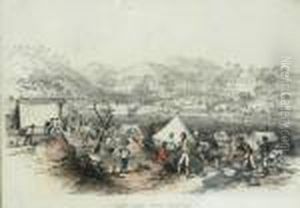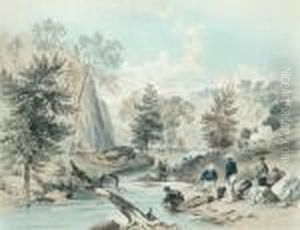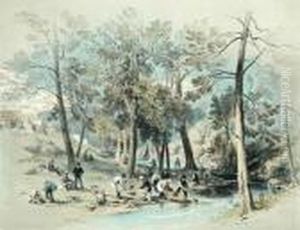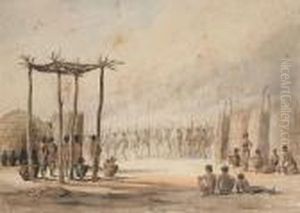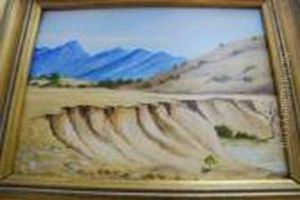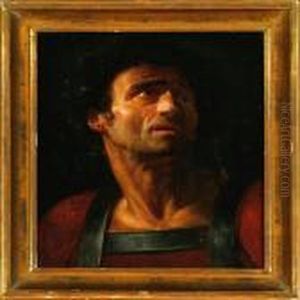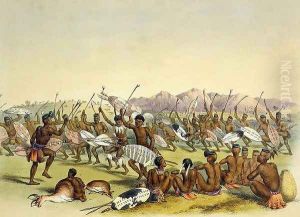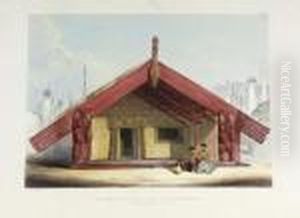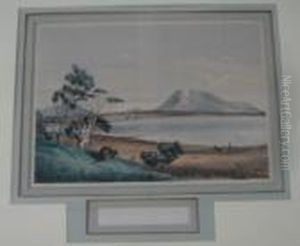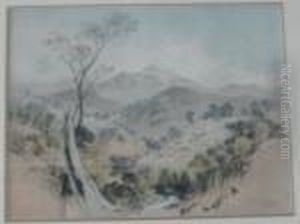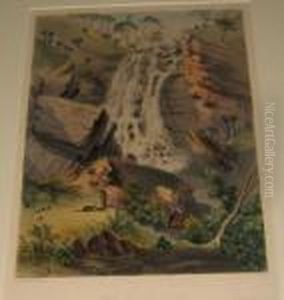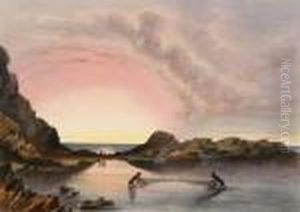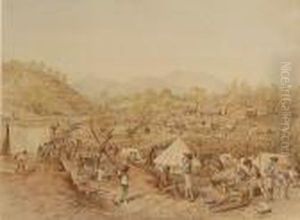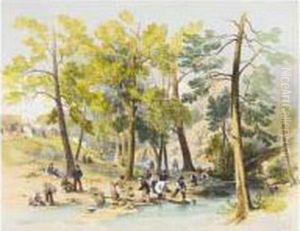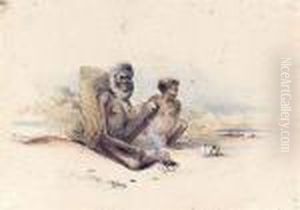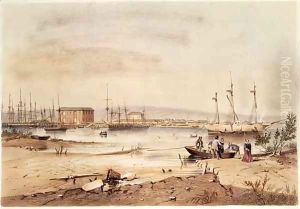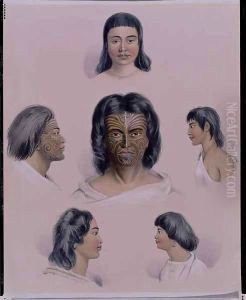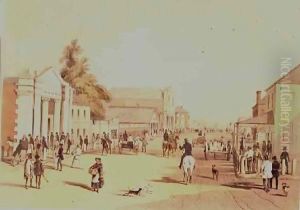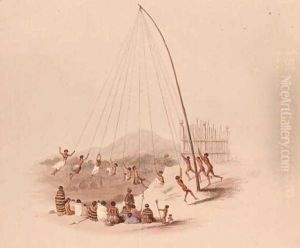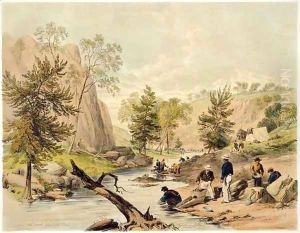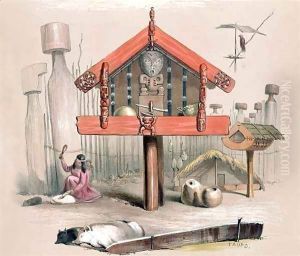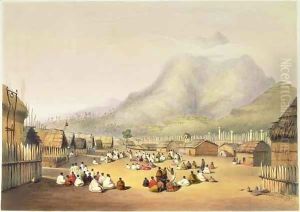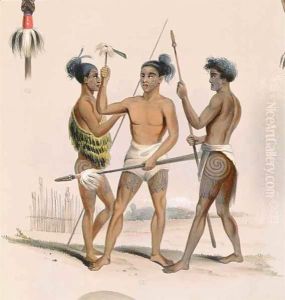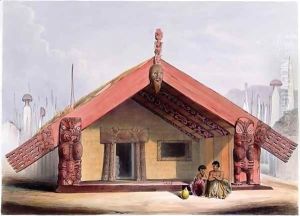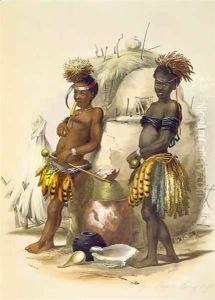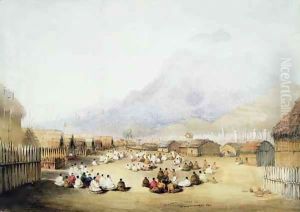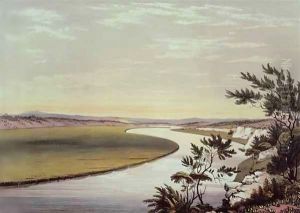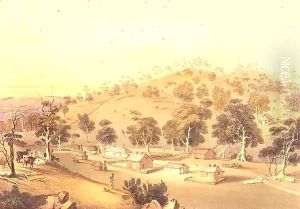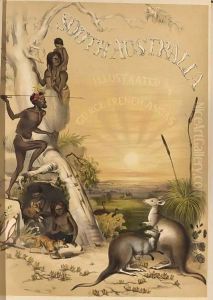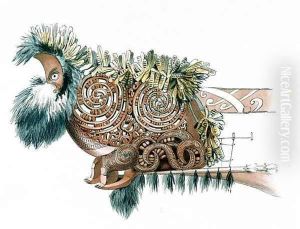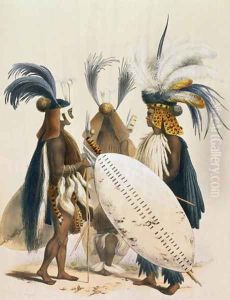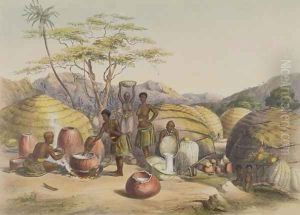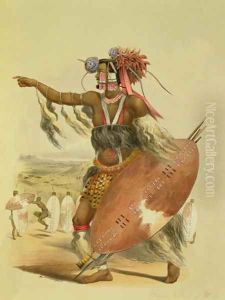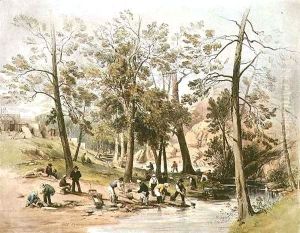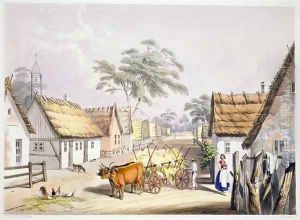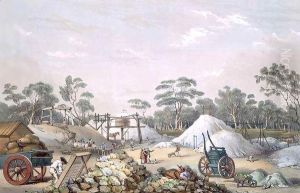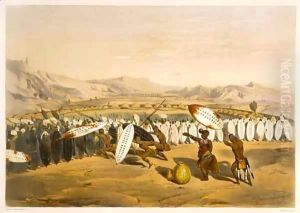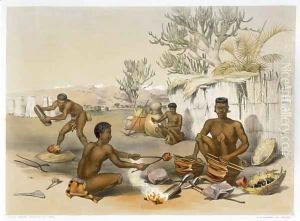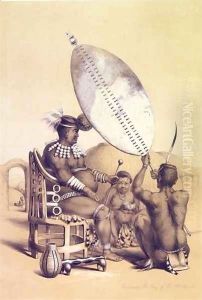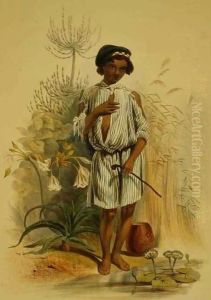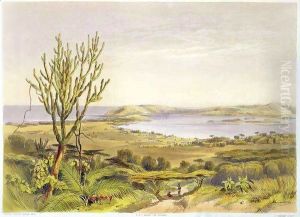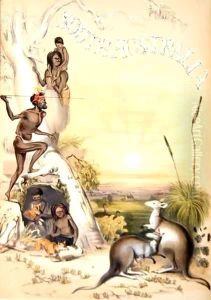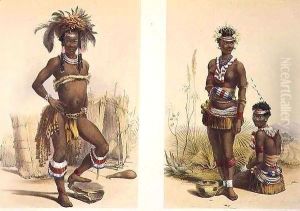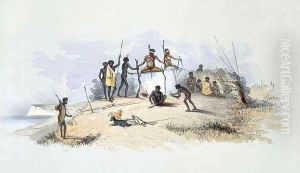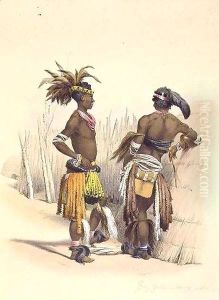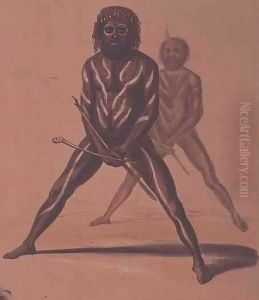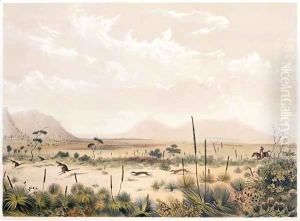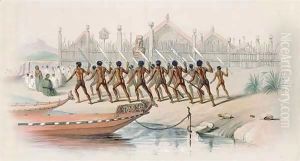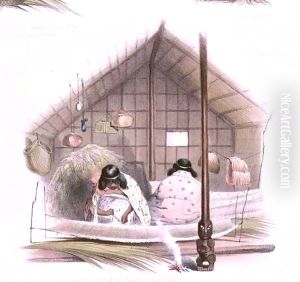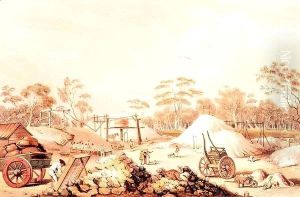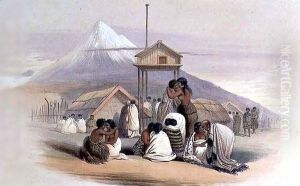George French Angas Paintings
George French Angas was an English painter and naturalist known for his detailed illustrations of landscapes, plants, and wildlife, as well as his ethnographic depictions of indigenous peoples. Born on April 25, 1822, in Newcastle upon Tyne, Angas was the son of George Fife Angas, a prominent businessman and a founder of South Australia. His inclination towards art and nature was evident from an early age, and his wealthy family background allowed him to pursue his interests freely.
From 1844 to 1845, Angas traveled to Australia, where he explored and painted the South Australian landscapes and the Indigenous peoples. His experiences were later published in a volume titled 'South Australia Illustrated,' which gained significant acclaim for the quality of its lithographs and the comprehensiveness of its content.
Angas's travels extended to New Zealand, where he similarly recorded the landscapes and the Maori culture. His works from this period were published in 'The New Zealanders Illustrated.' The illustrations are particularly valuable for their historical depiction of Maori life before significant European influence.
In addition to his travels in the Antipodes, Angas also visited South Africa, where he documented wildlife and scenes of the Zulu War. His sketches and paintings from this period were compiled into his work 'The Kafirs Illustrated,' which is an important record of the people and the natural environment of the region at that time.
George French Angas was not only a skilled artist but also an important ethnographer. His works provided a visual record of indigenous cultures and natural environments during a period of rapid colonial expansion. He was able to capture the essence of the subjects he studied with a keen eye for detail and a high degree of accuracy. His artistic legacy is preserved in the collections of various institutions, including the National Library of Australia and the British Museum.
Angas's contribution to the natural sciences and ethnography was recognized by his contemporaries, and his works continue to be of interest to historians and art enthusiasts alike. He passed away on October 4, 1886, in London, but left behind a rich body of work that continues to be appreciated for its artistic and documentary value.
